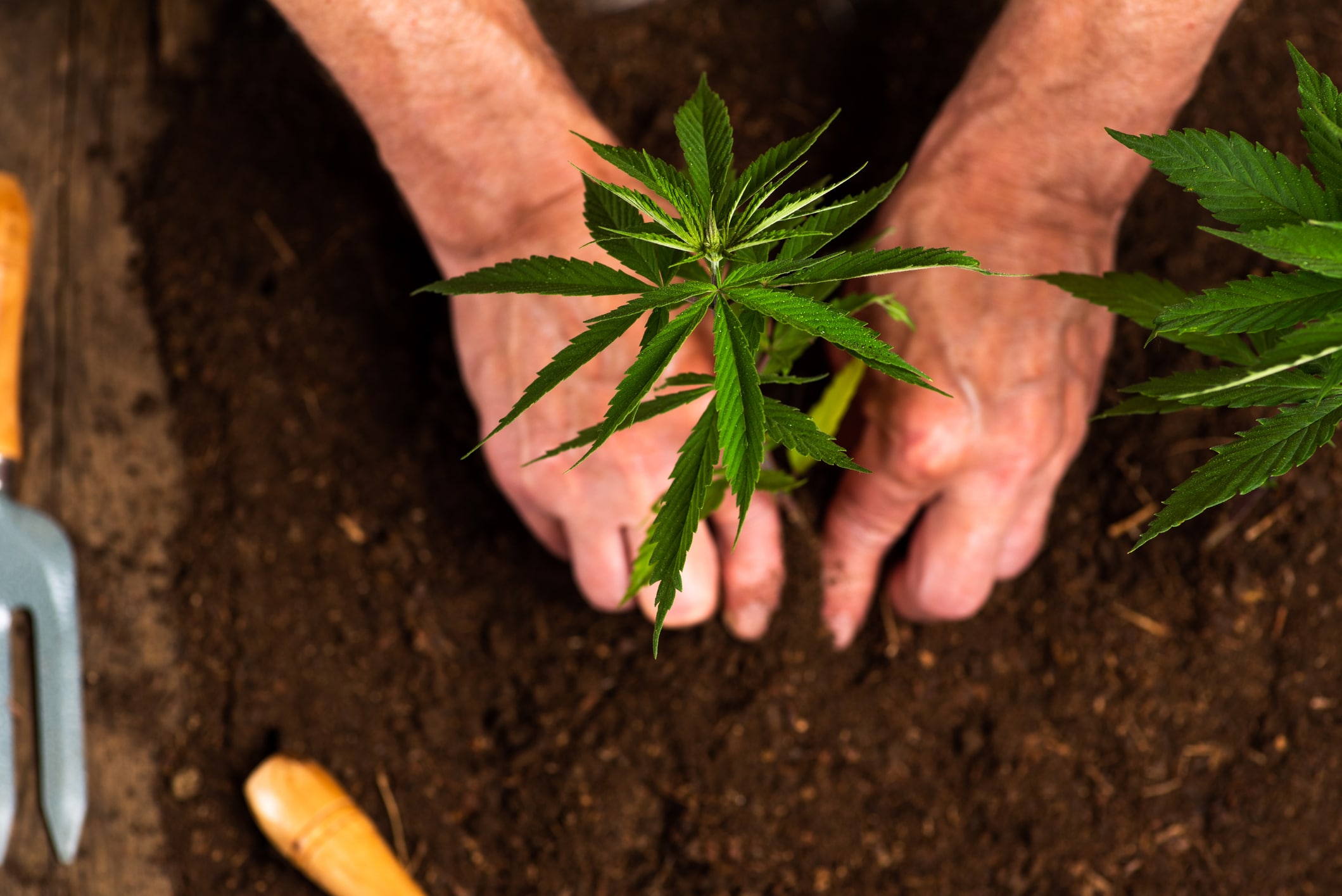How to Clone Cannabis: The Beginner’s Guide

Posted on May 13th, 2023 to Growing Cannabis by alex yazhbin
Growing your own cannabis and specifically learning how to clone the cannabis plant can be a fun way to learn more and develop your gardening skills. An added bonus of growing your own cannabis is that you’ll save money otherwise spent buying cannabis at a dispensary.
One of the most critical but intimidating steps for new growers learning how to grow cannabis at home is the cloning process. The name alone is enough to scare some folks away, but it shouldn’t. So read on as we explore this important and valuable technique and break down exactly how to clone a cannabis plant.
Cloning Cannabis Plants: What Is It, and Why Do It?
In many cases, the cannabis plant is grown from a seed, which follows the standard plant lifecycle from germination through vegetative growth and eventually flowering. When pollen from a male plant contacts a female one, the female produces seeds which can then be used to grow even more plants. This process of sexual reproduction is straightforward but can lead to more variation and is a naturally time-consuming process.
The alternative is cannabis cloning, sometimes referred to as asexual reproduction. Cloning creates new plants which are formed from cuttings taken from the established plants. It ensures consistency between plants, a vital factor when genetics or strain-type is important.
Why grow from a cannabis clone rather than a seed?
Cloning is also much faster, skipping the slow but otherwise necessary early growth stage which can sometimes take an extra week or two. Critically, cloning allows the grower to produce solely female plants, the only kind cannabis enthusiasts should look for when growing high-quality recreational or medical marijuana. It also allows for complete control over the genetics of the plant including strain type and phenotype. Learn more about indica vs sativa vs hybrid plants.
Equipment Needed for DIY Cannabis Cloning
While you won’t need every single piece of equipment in this list, we’ve compiled a list of equipment that professional cannabis cultivators would have on hand when embarking on a cloning session:
- Mother plant: A healthy and mature cannabis plant from which you’ll take cuttings.
- Sharp scissors or sterile razor blade: Used to make clean cuts when taking the cuttings from the mother plant.
- Rooting hormone: Optional, but it can increase the success rate of cloning by promoting root development. Available in powder or gel form.
- Rooting medium: The material in which the clones will develop roots. Common options include rockwool cubes, peat pellets, or soil.
- Small pots or containers: Used to plant the clones after taking the cuttings. Ensure they have drainage holes to prevent overwatering.
- Sanitizing agent: To clean and disinfect your work area, tools, and containers, you may use diluted bleach solution or rubbing alcohol.
- Clear plastic dome or humidity dome: Covers the clones to maintain high humidity levels during the initial rooting phase. Alternatively, you can use a propagator.
- Fluorescent or LED grow light: Provides the necessary light for vegetative growth. Choose a light suitable for cloning and seedling stages.
- Mist sprayer: Used to mist the clones and the inside of the humidity dome, keeping them adequately hydrated.
- pH-adjusted water: To water the clones and maintain appropriate moisture levels in the rooting medium.
- Nutrients (optional): Depending on the chosen rooting medium, you may need specific nutrients designed for young plants or clones.
- Thermometer: Allows you to monitor and maintain the appropriate temperature range for successful rooting.
- Hygrometer: Measures the humidity levels within the cloning environment, ensuring they are kept high initially.
- Timer (optional): If using grow lights, a timer can help automate the light cycle, providing consistent lighting to the clones.
- Pencil or marker: Used to create small holes in the rooting medium to insert the clones.
These are the basic equipment items you will need for cannabis cloning. Remember to adjust the list based on your specific cloning method or any additional techniques you plan to employ.
How to Clone a Cannabis Plant Step-by-Step
Step 1: Select a healthy mother plant
The process of how to clone cannabis starts by selecting a parent plant. In most cases, this will be a high-producing female plant with the characteristics you’re looking for in your clones. It should be healthy and adequately water before starting.
Step 2: Gather the necessary materials
You will need a few items to perform the cloning process, including sharp scissors or a sterile razor blade, rooting hormone (optional), a rooting medium (such as rockwool cubes, peat pellets, or soil), and small pots or containers.
Step 3: Prepare a sterile environment
Clean and disinfect your work area and tools to prevent contamination. Use a diluted bleach solution or rubbing alcohol to sanitize surfaces, scissors, and containers.
Step 4: Take cuttings
Start by using a sterilized razor or another sharp cutting tool to separate a branch diagonally, ideally 6-10 inches long, with at least two branching nodes. Select a branch from the mother plant that has new growth and healthy leaves. Using sharp scissors or a razor blade, make a diagonal cut just below a node (the area where a leaf meets the stem). Aim for a cutting that is 4-6 inches in length, and remove any large fan leaves, leaving a few small leaves near the top.
Step 5: Apply rooting hormone (optional)
Most dedicated cannabis growers will immediately place the cutting into a rooting hormone, though some use clean water instead. Many will also strip off all but a few leaves to encourage better rooting. Dip the cut end of the clone into a rooting hormone powder or gel. This can enhance root development and increase the success rate of cloning. Shake off any excess hormone to prevent overapplication.
Step 6: Plant the clones
After briefly soaking the cutting in the hormone, place it into your rooting medium. Some examples include coco coir, rockwool cubes, peat pellets, or more specialized substances. Some even develop roots hydroponically in water. Prepare your chosen rooting medium according to the instructions provided. Make a small hole in the medium with a pencil or your finger and gently place the clone into the hole, ensuring the lower nodes are in contact with the rooting medium. Lightly press the medium around the clone to secure it in place.
Step 7: Maintain humidity and temperature
Keep the clone properly watered and at the proper humidity and temperature during the crucial first few days and weeks – the low to mid-70s Fahrenheit, moist but not soggy. Cover the clones with a clear plastic dome or place them in a humidity dome or propagator. Keep the temperature between 70-80°F (21-27°C) to encourage root growth. Clones are ready to transplant to their permanent home and growing medium once roots of an inch to two inches have developed.
Step 8: Provide adequate light
Place the clones under a fluorescent or LED grow light. Maintain a light cycle of 18-24 hours of light per day to support vegetative growth.
Step 9: Watering
Mist the clones and the inside of the humidity dome regularly to maintain moisture levels. Avoid overwatering, as excessive moisture can lead to root rot. Monitor the moisture content of the rooting medium and water as needed.
Step 10: Monitor and care for the clones.
Keep an eye on the clones for signs of wilting or disease. After a couple of weeks, check for root development by gently tugging on the clones. If there is resistance, roots have likely formed.
Step 11: Transition to a new environment
Once the clones have established roots, gradually expose them to lower humidity and less frequent misting over a period of several days. This will help them adapt to the regular growing environment.
Step 12: Transplanting
After the clones have developed a healthy root system, they can be transplanted into larger containers or your desired growing medium. Provide appropriate nutrients, water, and light to continue their growth.
What Should I Do After I Take The Clone?
By now, your clone is on the path to life as a thriving marijuana plant. However, some additional care is needed for the first few weeks as they settle into their new home and build up strength. Don’t overexpose them to overly harsh light levels, and fertilize as needed to help encourage proper vegetative growth. If your clone is as successful as anticipated, you can even create clones from it down the line, continuing the heritage of your first plant for another generation.
The Science of How to Clone a Cannabis Plant
Scientifically, cloning works through the process of encouraging a still-living but cut portion of a plant to develop its own roots. Many plants possess this ability, which helps them from an evolutionary perspective by allowing parts of the plant to survive and thrive even if separated from the main, or if the main portion dies. As it will have the exact same genetics as the parent plant, clones are often created from the most desirable traditionally grown versions, which may have higher yields or potency or better flavors, aromas, or other features.
Learning How to Clone Cannabis is Easy and Rewarding
While there’s an undeniable appeal in seeing a humble seed transformed into a stately cannabis plant, there’s no denying that cloning weed is the fastest way to produce the most reliable flower. And as you can see, the process of how to clone a cannabis plant is easy and straightforward, able to be learned and perfected by any dedicated grower. Remember these tips, and you’ll always just be one step away from another high-quality, productive plant.
Copyright © 2024 Medical Marijuana Doctor - MMJ Doctor Near Me
Site by CannaPlanners
